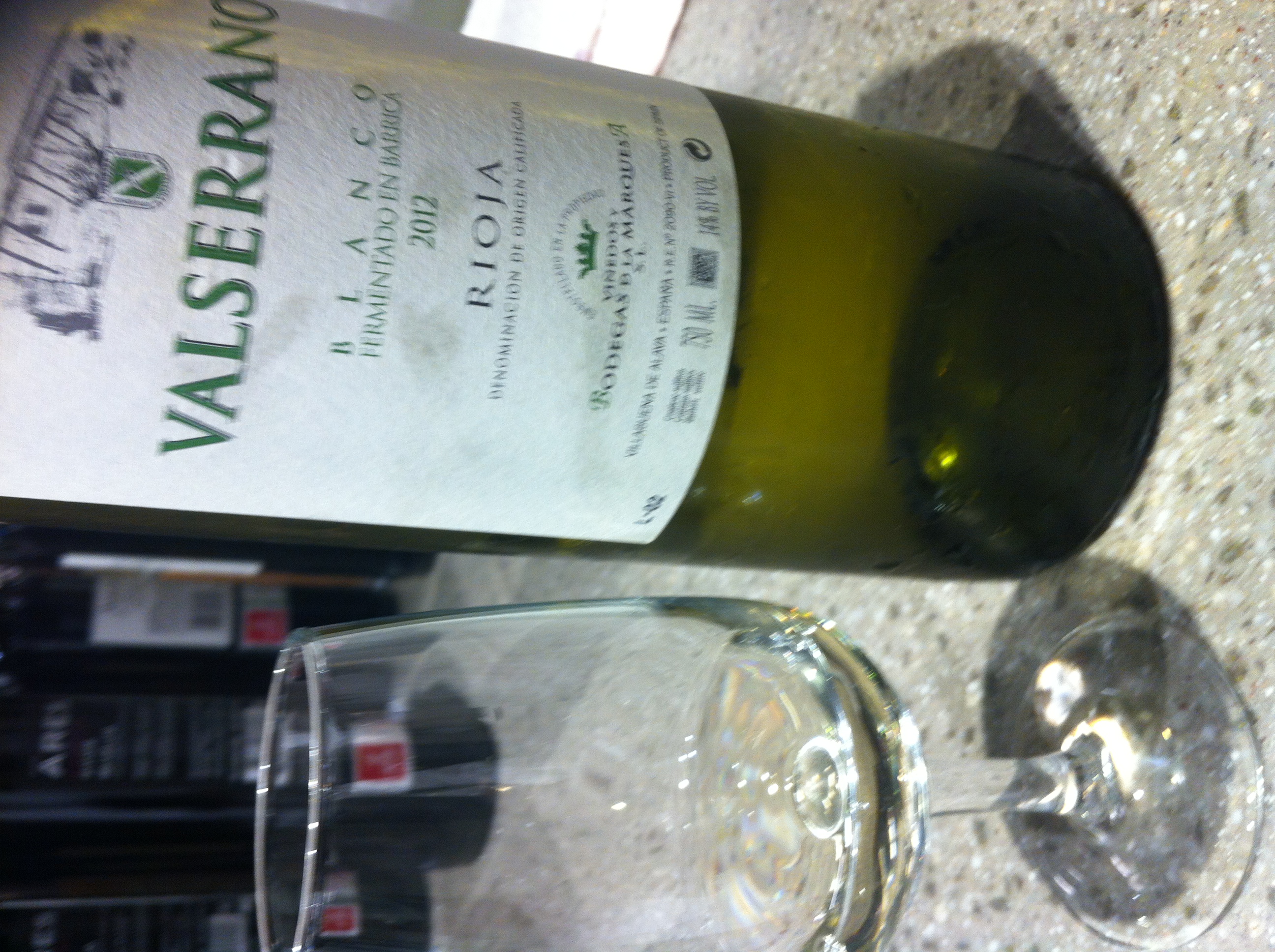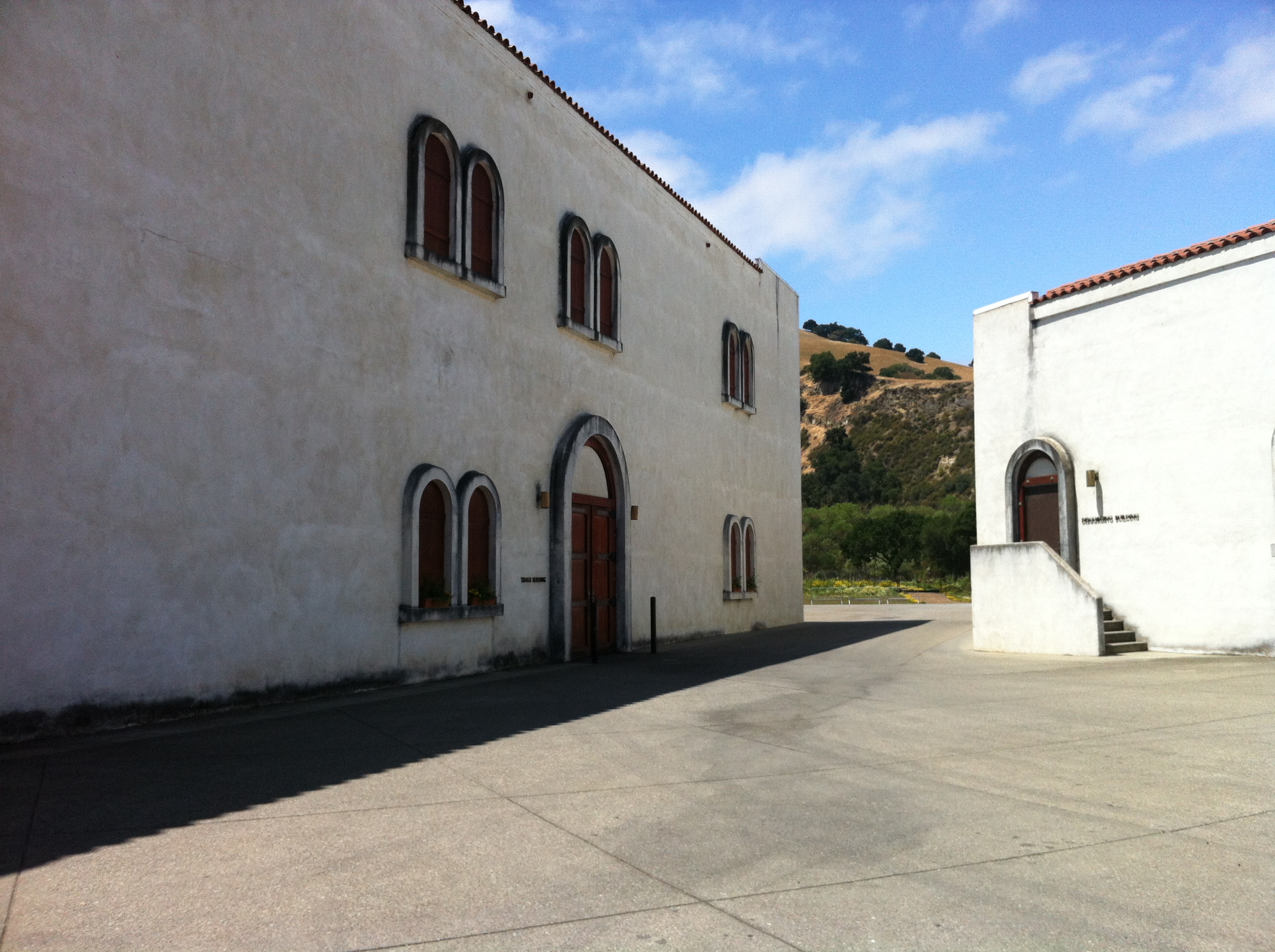|
Verdejo
Verdejo is a variety of wine grape that has long been grown in the Rueda region of Spain. The grape originated in North Africa, and was spread to Rueda in about the 11th Century, possibly by Mozarabs. Verdejo was generally used to make a strongly oxidized, Sherry-like wine. In the Mid-20th Century, Verdejo almost became extinct, had it not been for the local winegrower ГЃngel RodrГguez Vidal (Bodega Martinsancho), who opted for this variety and contributed to re-establishing its prominence in the region. In the 1970s, the winemaking company MarquГ©s de Riscal began to develop a fresher style of white wine based on Verdejo with the help of French oenologist Г‰mile Peynaud.Asimov, Eric (2008)"Wines of the Times: Emerging, in Spain, to Warm Applause" ''The New York Times'', March 5, 2008. Online version retrieved 2008-03-07. In 1980, white wines from the Rueda region were recognized by a DenominaciГіn de Origen (DO). Wines labeled ''Rueda'' must contain 50% Verdejo; the remain ... [...More Info...] [...Related Items...] OR: [Wikipedia] [Google] [Baidu] |
Rueda (DO)
Rueda is a Spanish DenominaciГіn de Origen Protegida (DOP) for wines located in the Community of Castile and LeГіn. It comprises 72 municipalities, of which 53 are in the province of Valladolid, 17 are in the north of the province of Segovia, and 2 are in the north of the province of ГЃvila."DenominaciГіn de Origen Rueda" webpage of . Retrieved March 7, 2008. It is one of Spain's leading wine regions, and is known primarily for its white wines based on the Verdejo grape. History [...More Info...] [...Related Items...] OR: [Wikipedia] [Google] [Baidu] |
Spain (wine)
Spanish wine () includes red, white, and sparkling wines produced throughout the country. Located on the Iberian Peninsula, Spain has over 1.2 million hectares (2.9 million acres) planted in wine grapes, making it the most widely planted wine-producing nation,K. MacNeil ''The Wine Bible'' pg 410-422 Workman Publishing 2001 but the second largest producer of wine in the world, behind Italy and ahead of France and the United States. This is due, in part, to the very low yields and wide spacing of the old vines planted on the dry soils found in some of the Spanish wine regions. The country is ninth in worldwide consumption with Spaniards drinking, on average, 21.6 litres (5.7 US gal) per person a year. The country has an abundance of native grape varieties, with over 400 varieties planted throughout Spain, though 88 percent of the country's wine production is from only 20 grapes — including the reds Tempranillo, Bobal, Garnacha, and Monastrell; the whites Alb ... [...More Info...] [...Related Items...] OR: [Wikipedia] [Google] [Baidu] |
Vitis Vinifera
''Vitis vinifera'', the common grape vine, is a species of flowering plant, native to the Mediterranean Basin, Mediterranean region, Central Europe, and southwestern Asia, from Morocco and Portugal north to southern Germany and east to northern Iran. There are currently between List of grape varieties, 5,000 and 10,000 varieties of ''Vitis vinifera'' grapes though only a few are of commercial significance for wine and table grape production. The wild grape is often classified as ''Vitis vinifera'' ''sylvestris'' (in some classifications considered ''Vitis sylvestris''), with ''Vitis vinifera'' ''vinifera'' restricted to cultivated forms. Domesticated vines have hermaphrodite#Botany, hermaphrodite flowers, but ''sylvestris'' is plant sexuality, dioecious (male and female flowers on separate plants) and pollination is required for fruit to develop. Grapes can be eaten fresh or dried to produce raisins, Sultana (grape)#Raisins, sultanas, and Zante currant, currants. Grape leaves ar ... [...More Info...] [...Related Items...] OR: [Wikipedia] [Google] [Baidu] |
French (people)
The French people (french: Français) are an ethnic group and nation primarily located in Western Europe that share a common French culture, history, and language, identified with the country of France. The French people, especially the native speakers of langues d'oïl from northern and central France, are primarily the descendants of Gauls (including the Belgae) and Romans (or Gallo-Romans, western European Celtic and Italic peoples), as well as Germanic peoples such as the Franks, the Visigoths, the Suebi and the Burgundians who settled in Gaul from east of the Rhine after the fall of the Roman Empire, as well as various later waves of lower-level irregular migration that have continued to the present day. The Norse also settled in Normandy in the 10th century and contributed significantly to the ancestry of the Normans. Furthermore, regional ethnic minorities also exist within France that have distinct lineages, languages and cultures such as Bretons in Brittany, Occ ... [...More Info...] [...Related Items...] OR: [Wikipedia] [Google] [Baidu] |
Body (wine)
The use of wine tasting descriptors allows the taster to qualitatively relate the aromas and flavors that the taster experiences and can be used in assessing the overall quality of wine. Wine writers differentiate wine tasters from casual enthusiasts; tasters attempt to give an objective description of the wine's taste (often taking a systematic approach to tasting), casual enthusiasts appreciate wine but pause their examination sooner than tasters. The primary source of a person's ability to taste wine is derived from their olfactory senses. A taster's own personal experiences play a significant role in conceptualizing what they are tasting and attaching a description to that perception. The individual nature of tasting means that descriptors may be perceived differently among various tasters. The following is an incomplete list of wine tasting descriptors and a common meaning of the terms. These terms and usage are from Karen MacNeil's 2001 edition of ''The Wine Bible'' u ... [...More Info...] [...Related Items...] OR: [Wikipedia] [Google] [Baidu] |
Aromatic (wine)
Aromatic wines are white wines with dominant aroma. The best known are riesling, gewГјrztraminer, viognier, muscat and pinot gris Pinot Gris, Pinot Grigio (, ) or Grauburgunder is a white wine grape variety of the species ''Vitis vinifera''. Thought to be a mutant clone of the Pinot Noir variety, it normally has a grayish-blue fruit, accounting for its name, but the gr .... TorrontГ©s is an aromatic wine. References {{wine-stub Wine ... [...More Info...] [...Related Items...] OR: [Wikipedia] [Google] [Baidu] |
Harvested (wine)
The harvesting of wine grapes (Vintage) is one of the most crucial steps in the process of wine-making. The time of harvest is determined primarily by the ripeness of the grape as measured by sugar, acid and tannin levels with winemakers basing their decision to pick based on the style of wine they wish to produce. The weather can also shape the timetable of harvesting with the threat of heat, rain, hail, and frost which can damage the grapes and bring about various vine diseases. In addition to determining the time of the harvest, winemakers and vineyard owners must also determine whether to use hand pickers or mechanical harvesters. The harvest season typically falls between August & October in the Northern Hemisphere and February & April in the Southern Hemisphere. With various climate conditions, grape varieties, and wine styles the harvesting of grapes could happen in every month of the calendar year somewhere in the world. In the New World it is often referred to as the ... [...More Info...] [...Related Items...] OR: [Wikipedia] [Google] [Baidu] |
Macabeo
Macabeo, also called Viura or Macabeu (, ), is a white variety of wine grape. It is widely grown in the Rioja region of northeastern Spain, the Cava producing areas south of Barcelona, and the Languedoc-Roussillon region of France. Spanish plantations stood at nearly in 2015, making it the second most grown white grape variety in Spain. In France, plantations accounted for in 2007. Since 2009, some Macabeo is grown in Israel. Styles and winemaking  The grape is mostly used to make mildly acidic and young white wines mostly suitable for early co ...
The grape is mostly used to make mildly acidic and young white wines mostly suitable for early co ...
[...More Info...] [...Related Items...] OR: [Wikipedia] [Google] [Baidu] |
Sauvignon Blanc
is a green-skinned grape variety that originates from the Bordeaux region of France. The grape most likely gets its name from the French words ''sauvage'' ("wild") and ''blanc'' ("white") due to its early origins as an indigenous grape in South West France. It is possibly a descendant of Savagnin. is planted in many of the world's wine regions, producing a crisp, dry, and refreshing white varietal wine. The grape is also a component of the famous dessert wines from Sauternes and Barsac. Sauvignon blanc is widely cultivated in France, Chile, Romania, Canada, Australia, New Zealand, South Africa, Bulgaria, the states of Oregon, Washington, and California in the US. Some New World Sauvignon blancs, particularly from California, may also be called "FumГ© Blanc", a marketing term coined by Robert Mondavi in reference to Pouilly-FumГ©. Depending on the climate, the flavor can range from aggressively grassy to sweetly tropical. In cooler climates, the grape has a tendency ... [...More Info...] [...Related Items...] OR: [Wikipedia] [Google] [Baidu] |
Wine Label
Wine labels are important sources of information for consumers since they tell the type and origin of the wine. The label is often the only resource a buyer has for evaluating the wine before purchasing it. Certain information is ordinarily included in the wine label, such as the country of origin, quality, type of wine, alcoholic degree, producer, bottler, or importer.George, Rosemary, ''The Simon & Schuster Pocket Wine Label Decoder'', 1989. In addition to these national labeling requirements producers may include their web site address and a QR Code with vintage specific information. Information provided Label design Some wineries place great importance on the label design while others do not. There are wineries that have not changed their label's design in over 60 years, as in the case of ChГўteau Simone, while others hire designers every year to change it. Labels may include images of works by Picasso, Chagall, and other artists, and these may be collector's pieces. The el ... [...More Info...] [...Related Items...] OR: [Wikipedia] [Google] [Baidu] |
Г‰mile Peynaud
Émile Peynaud (June 29, 1912 – July 18, 2004) was a French oenologist and researcher who has been credited with revolutionizing winemaking in the latter half of the 20th century, and has been called "the forefather of modern oenology". Biography Peynaud entered the wine trade at the age of fifteen with the négociant Maison Calvet. At Calvet he worked under the chemical engineer Jean Ribéreau-Gayon, and they developed methods of analysing the wines that were to be purchased. In 1946, Peynaud completed his Doctorate at the University of Bordeaux and joined its faculty as a lecturer. Ribéreau-Gayon at this time was also teaching at the University, and the two shifted their previous focus of problems faced by Calvet to the problems faced by the winemakers themselves. While at the University of Bordeaux, where he became a professor of oenology, Peynaud worked at providing scientific explanations for many problems encountered in the process of winemaking. He convinced the winer ... [...More Info...] [...Related Items...] OR: [Wikipedia] [Google] [Baidu] |





